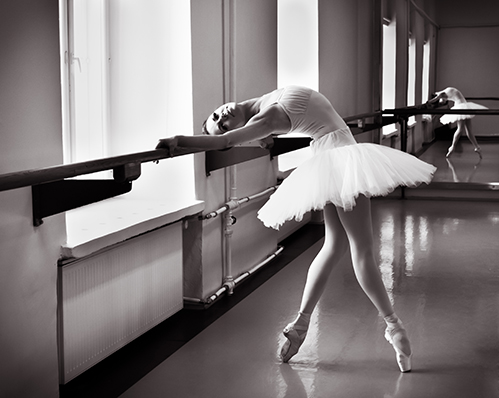If you need to get a lively conversation going at a party full of dancers and dance teachers, ask them which ballet method they think is the best. Ballet methods are different teaching styles or schools of ballet that have developed around the world since ballet’s inception in the 15th century. Each method has unique characteristics that define it and special characteristics in the manner it’s taught to students.
Read on to learn about the main methods of ballet – and to make sure you can hold your own in that dinner party conversation.
Balanchine Method
The Balanchine method is also known as the American method. It was invented by George Balanchine, an esteemed choreographer who immigrated to the U.S. from Russia in the 1930s, Juliette Dupre of the blog Ballet Scoop explained. Together with Lincoln Kirstein, Balanchine opened the School of American Ballet in 1934.
Younger in age than the other main ballet methods, Balanchine’s style is full of energy and vitality. While Balanchine took initial inspiration from the traditional Russian method, he rejected classical stiffness for jazzy, athletic movements, breathtaking speed and dizzying height. Every movement is pointed, emphatic and performed with the utmost expression and force. As Dupre wrote:
“Even a simple port de corp devant was not to be considered a stretch but a fully artistic movement where the aesthetic of the body’s journey through space was the most important thing.”
Consequently, the Balanchine method is considered neoclassical ballet. The modern and fresh approach to movement in the Balanchine method is expressed in other aspects of ballet performance as well. It rejects flouncy and frilly costumes for clean leotards, and scrapped fancy sets for simple backgrounds so that the focus is on the dancers, Ballet In You explained.
[wpsm_video]https://www.youtube.com/embed/1jiqrMb4Lu0[/wpsm_video]
The French School
Where the Balanchine method is modern, the French School goes back. Way back – to the courts of Louis XIV in the late 16th century. In 1713, the Ecole de Danse de l’Opera was opened and was the teaching grounds of some of ballet’s greatest masters, according to the American Ballet Theatre.
While the French school traces its influences back centuries, it came into its own under the leadership of Rudolf Nureyev, who was director of the Paris Opera Ballet in the 80s. The French School is a classical ballet style that emphasizes elegant lines, fluidity and graceful dancing along with technical precision. The French school’s true trademark is the petite batterie – a prime example of the method’s emphasis on quick, precise footwork, according to DanceSpirit magazine.
Cecchetti Method
Created by Italian Enrico Cecchetti, the Cecchetti method was invented as a way to teach ballet to new generations, ABT explained. Cecchitti meant business – his teaching method involves eight intense stages of training and includes strict repetition and routines.
The rigid and regimented teaching style is a result of Cecchetti’s scientific attitude toward ballet and the idea that jetes and arabesques don’t just involve one part of the body, but the body as a whole, according to Ballet In You. Technical skill is tantamount, and Cecchetti dancers must practice the same movements over and over again daily. The goal is that heavy repetition, dedicated focus and steady discipline will create dancers that can withstand – and thrive in the face of – the harsh demands of ballet.
English Style
The English Style is also known as the Royal Academy of Dance. It was pioneered in 1920 and is a blend of the French, Italian, Danish and Russian methods, explained Dance Informa magazine. The Royal Academy of Dance is also an international dance examination standard. For English-Style-dancers, the focus is on the details and getting each and every movement exactly, with an emphasis on perfecting the basics. Progress is ultimately slow for dancers taught in the RAD method, and it takes countless hours of practicing even the smallest movement to be able to move on to the next stage.
Russian School
“The most famous of all Russian styles is the Vaganova Method.”
Of course, no discussion of ballet methods would be complete without the Russians. This school was formed from a blend of influences. French dancer Jean-Baptiste Landé is credited as its creator, while ABT noted that Italian ballerina Virginia Zucchi had an incredible influence on the Russian School when she performed in St. Petersburg in the late 1800s, along with Enrico Cecchetti, who also spent some time in Russia. Other ballet masters also influenced the Russian Method, including the legendary Marius Petipa.
However, the most famous of all Russian styles is the Vaganova Method. It was developed by Agrippina Vaganova, a Russian ballet dancer with the Marinsky Ballet who retired early to devote her time to teaching, explained Dance Informa. Defining characteristics of the Vaganova method include precise, crisp and strong movements that are still artistic and expressive. The Vaganova method is one of the most popular methods used in Russia today.



